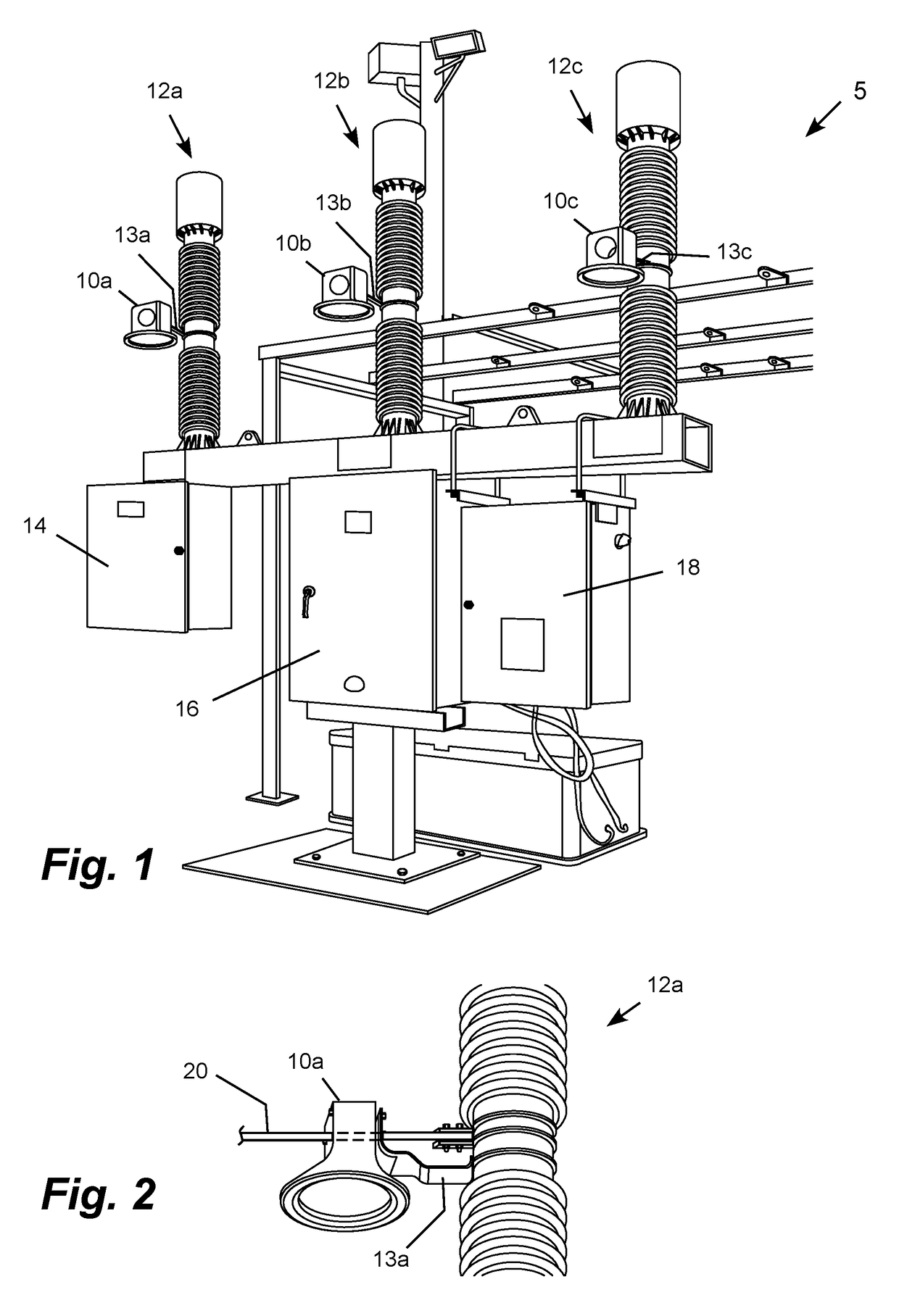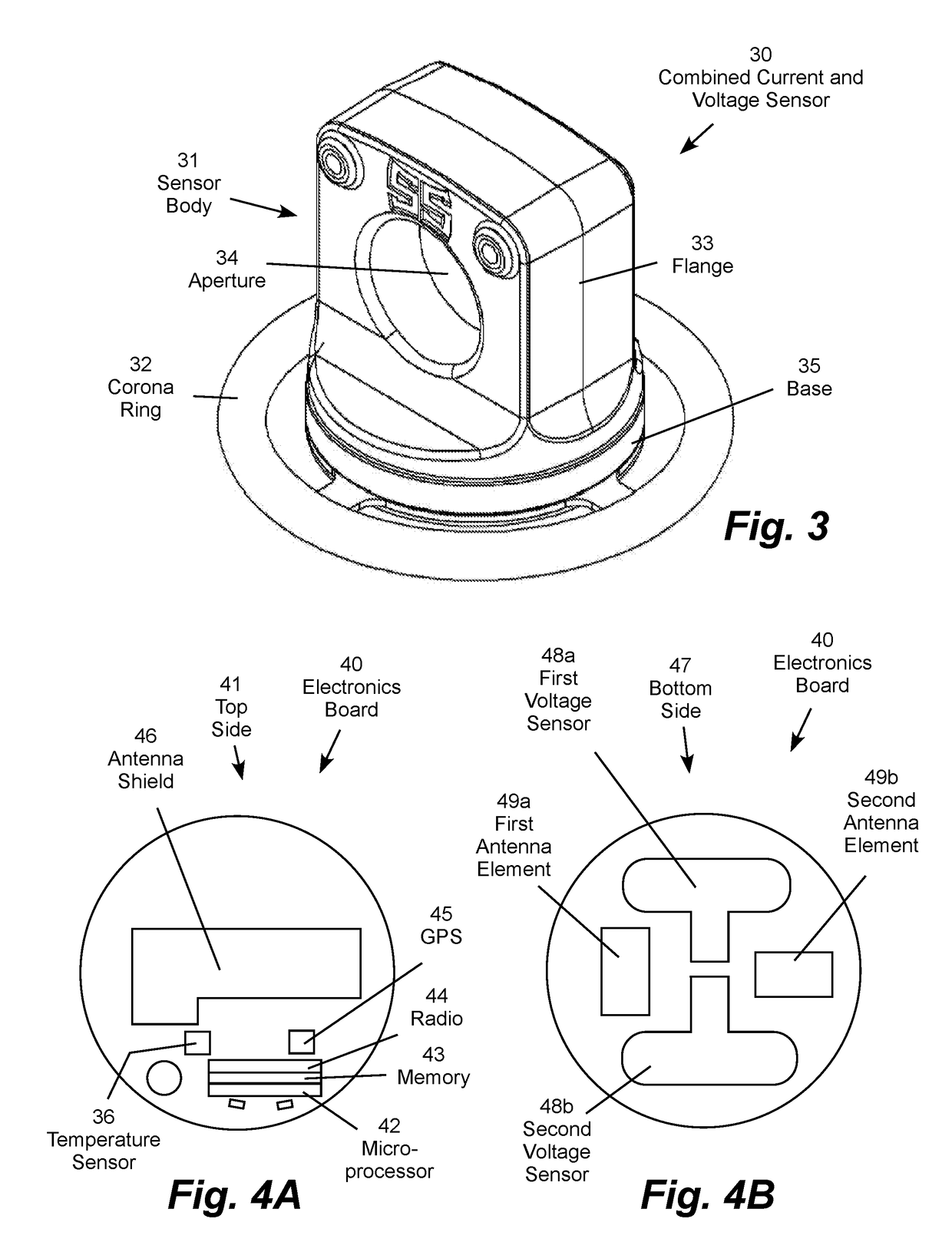Combined Current and Voltage Sensor for High Voltage Electric Power Lines
- Summary
- Abstract
- Description
- Claims
- Application Information
AI Technical Summary
Benefits of technology
Problems solved by technology
Method used
Image
Examples
Embodiment Construction
[0022]The present invention may be embodied in a high voltage electric power line monitor including a current sensor, a voltage sensor, an energy harvesting power supply, and a communication device. The combined electric current and voltage monitor is configured to be supported by a structure, such a sectionalizing switch disposed within an insulator cylinder. The switch also supports the power line monitored by the current and voltage sensors. The current sensor coil and an energy harvesting device (e.g., inductive coil) are configured to surround and be positioned transverse to the monitored power line with the power line extending through an aperture formed by the current sensor. The voltage sensor is carried on an electronics board configured to be positioned parallel to the monitored power line, typically below the current sensor. Both the current sensor and the voltage sensor are configured to positioned adjacent to, but spaced apart from, the monitored power line. The current...
PUM
 Login to View More
Login to View More Abstract
Description
Claims
Application Information
 Login to View More
Login to View More - Generate Ideas
- Intellectual Property
- Life Sciences
- Materials
- Tech Scout
- Unparalleled Data Quality
- Higher Quality Content
- 60% Fewer Hallucinations
Browse by: Latest US Patents, China's latest patents, Technical Efficacy Thesaurus, Application Domain, Technology Topic, Popular Technical Reports.
© 2025 PatSnap. All rights reserved.Legal|Privacy policy|Modern Slavery Act Transparency Statement|Sitemap|About US| Contact US: help@patsnap.com



